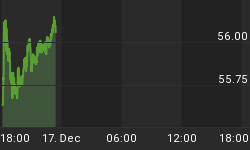Dow Jones Industrial Average 10,960
Value Line Arithmetic Index 1,994
30-Year Treasury Yield (TYX) 4.53%
20+ Year Treasury Bond Price (TLT) 92.03
Gold 1/10 Ounce (GLD) $55.44
The Big Picture for Stocks
The 4-year cycle is negative into 2006.
Technical Trendicator (1-4 month trend):
Stock Prices Down
Bond Prices Down
Gold Price Up
More Trading Tips
-
Relax. There is not a shred of evidence that life is so serious.
-
Cycles exist. The mood of the moment will change. If good, expect things to sour. If sour, expect things to improve.
-
God is sovereign. Remind yourself, especially during tough times that this, whatever it is, must be good for me in time. Learn from failures and difficult periods.
-
There is a difference between a good investment and a good company. The lousiest companies might be great investments at the right price. And the best companies might be poor investments during periods of over-valuation.
-
Absolute progress in fundamentals (earnings, sales growth, etc) is sometimes illusory, because the price may be discounting the future. Look for change at the margin. On the long side, consider improving situations, or ones likely to improve. That is, a company with an improving outlook may be better than one with a higher but consistent growth rate in sales. Similarly, focus your search on companies which may garner improving perception on the part of investors over time, rather than ones that already enjoy a great reputation. Vice-ver sa for short candidates.
-
Avoid making decisions based on gut feelings. Look for the evidence.
-
You will more likely find mispriced securities in the smallest, most under-researched companies. So, if you want to find a bargain, you have to take the risk of investing in unknown companies. Further, growth is easier from a small base. Blue chip stocks have their runs, but there are very long periods when blue chip stocks go nowhere.
Market Valuation
The bullish case for stocks at present seems based largely on price-earnings ratios being modest. However, Charles de Vaulx in a December 12, 2005 Barron's interview points out that there are factors which suggest that p/e ratios are higher than most people think. These factors include stock options not being expensed and pension liabilities being overstated.
De Vaulx argues that pension plans often use a rate-of-return assumption of around 8 ½%. But since the typical pension plan is invested 60% in equities and 40% in bonds, "an assumption of 8 1/2 % is criminal."
He thinks that instead of 15 or 16 times earnings, the S&P multiple - correctly accounted for - is around 20. Further, we may be at peak earnings for this cycle.
De Vaulx also points out that there has been massively more insider selling than buying. His calculation of insider activity from the weekly Barron's insider column shows insider sellers over buyers by a factor of 20-to-1 over the last 12 months.















